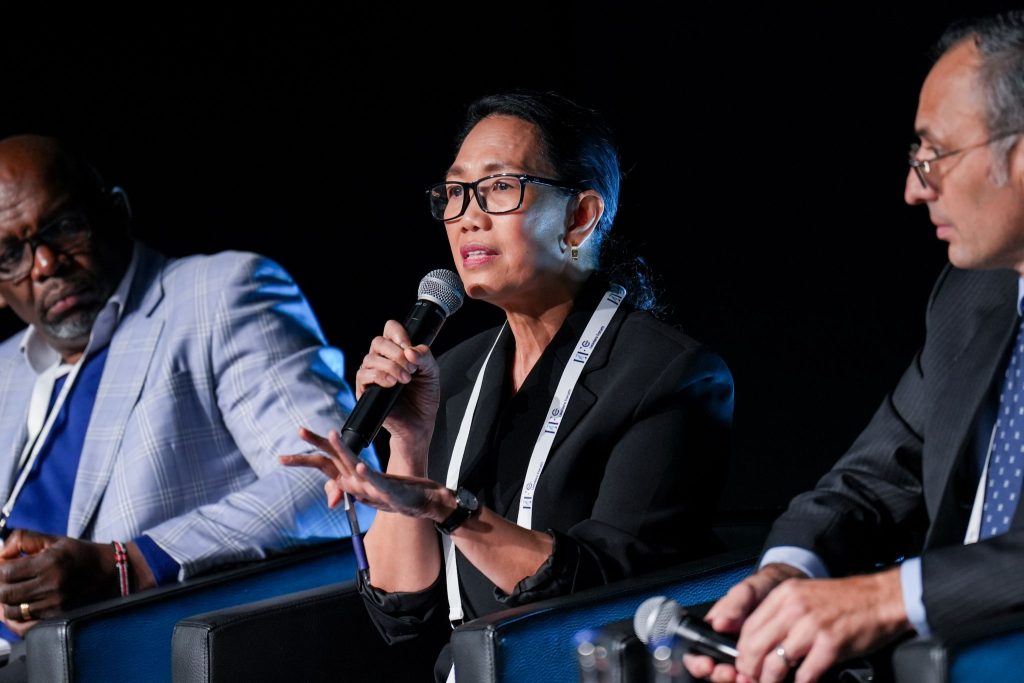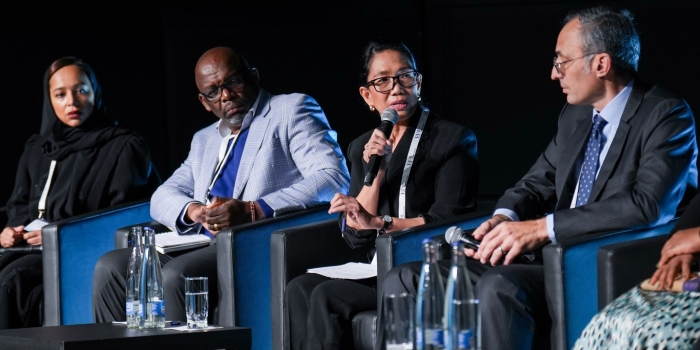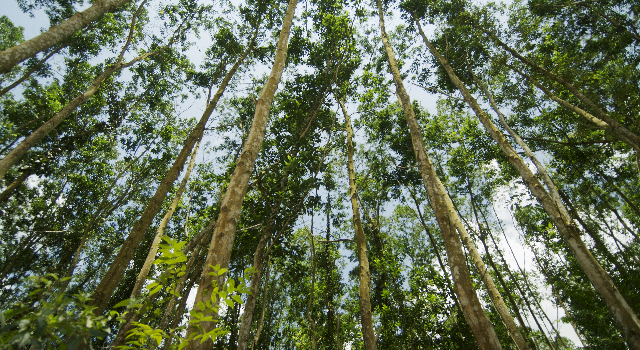What are the biggest opportunities and challenges for scaling nature-based investments? How can we ensure that investments build the necessary capacity within local communities, governments, and organisations to manage and sustain conservation efforts in the long run?
These were some of the key questions that Lucita Jasmin, Group Sustainability Director at RGE, addressed at the recent IUCN Leaders Forum in Geneva.
This event brought together global leaders in sustainability and conservation to discuss the opportunities and challenges of balancing economic development with conservation efforts and supporting local communities.
As a guest of the Investing in Nature: the path to “greening the world” session, Lucita shared RGE’s views, policies, and leadership experience in addressing the finance gap for nature and biodiversity and supporting local communities that depend on healthy ecosystems.
Lucita was joined by Daudi Sumba, Chief Conservation Officer – WWF International; Frank Elderson, Member of the Executive Board & Governing Council – European Central Bank; Judson Berkey, Managing Director, Chief Sustainability Office – UBS; Mohlago Flora Mokgohloa, Deputy Director General: Biodiversity And Conservation Department Of Forestry – Fisheries And The Environment South Africa, and Hiba Obaid Al Shehhi, Acting Assistant Undersecretary for Biodiversity and Marine Life Sector Ministry of Climate Change and Environment – UAE.
Helping local communities develop bankable business models
As a resource-based company, RGE has an intrinsic dependency on nature, and views investing in nature as imperative.
Sustainable transition in Asia is critically underpinned by its natural ecosystems’ protection, conservation, and restoration. Lucita shared that biodiversity and nature loss could threaten more than 60% of Southeast Asia’s GDP. Conversely, nature-positive business opportunities are estimated to generate more than USD 4 trillion by 2030.
However, despite a widespread acceptance of the need for nature investments, there remains a $700 billion annual finance gap, alongside challenges such as balancing economic development with conservation and ensuring local communities truly benefit. In light of these challenges, Lucita mentioned that bridging the gap between investor expectations and available projects is essential.
The ability to demonstrate commercial viability is a major barrier to progress, and therefore essential to help local communities develop bankable business models that supply the necessary long-term resourcing and technical expertise. These efforts should be long-term and scalable, instead of a one-time phenomenon.
Fortunately, if structured the right way, the business opportunities are immense. The World Economic Forum estimates that nature-positive solutions could bring $10 trillion in annual business opportunities and generate nearly 400 million jobs by the end of the decade.

Lucita Jasmin speaking at the roundtable event, “Investing in Nature.”
Effective Conservation is a Team Effort
Lucita shared her views on how partnerships can create scalable and replicable models for sustainable investments that contribute to social and economic resilience. Solid and lasting community partnerships – grounded in Free, Prior and Informed Consent (FPIC), genuine engagement, mutual benefit, and respect – are crucial. Without a firm foundation of social and economic resilience, then it is unlikely to succeed in the long run. What is also crucial is creative thinking around blended and concessional finance, so that other partners, such as development financial institutions (DFIs) and philanthropists can take on some of the risks.
More businesses should invest in nature – as part of its value chain, as offsets, as remedies for past harms, and to safeguard the longevity of their businesses by protecting the natural infrastructure on which they depend. For example, RGE has actively managed forest conservation and restoration programmes in Indonesia spanning more than 350,000 hectares, headlined by the Restorasi Ekosistem Riau (RER) programme in Riau Province, Sumatra, which was established in 2013. The company’s forest conservation and restoration areas balance its plantations, as part of a landscape model that is unique to the region. RER is a strong example of effective collaboration between government, the private sector and local communities – totaling more than 17,000 people.
Lucita also commented on how the private sector’s ability to scale financial and technical resources to support conservation is its superpower.
However, the market must undergo structural changes before unlocking more capital. In addition, the right legislative and regulatory framework is vital. Long-term licensing models and incentives are critical to ensuring inter-generational resourcing and management.
Finally, Lucita mentioned how the links between biodiversity, climate, poverty, and security are powerful, especially in developing economies. However, the market does not always fully recognise this. At the end of the day, effective conservation is a team sport; the private sector cannot succeed alone. Working closely with local communities, government bodies, and other stakeholders is indispensable to achieving positive results for all.







